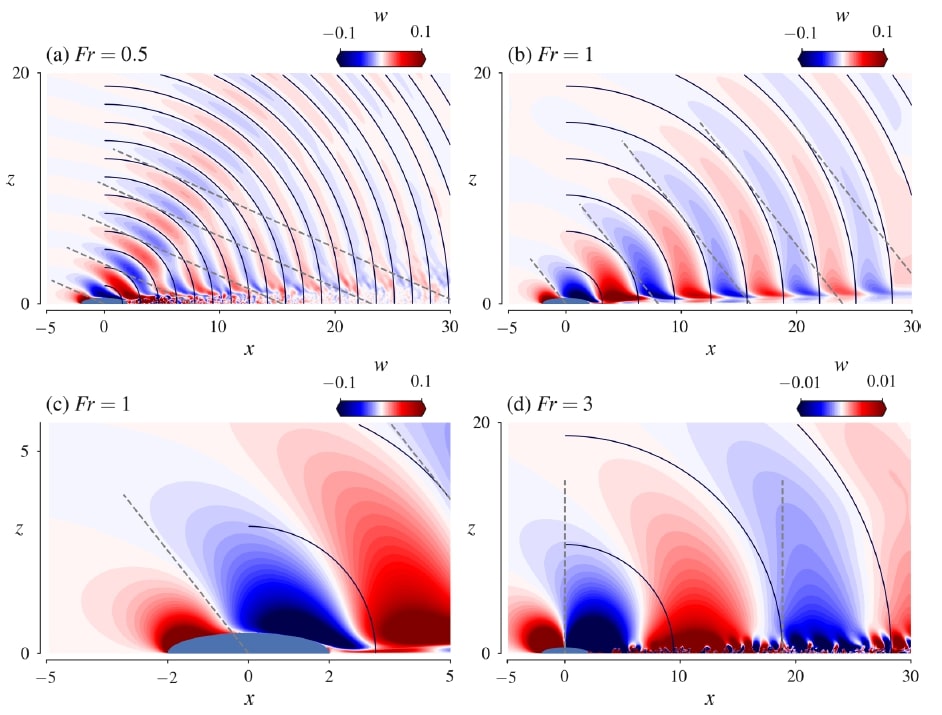Internal Gravity Waves
Streamlines


The effect of ambient stratification on flow past a prolate spheroid is investigated using large-eddy simulation. The aspect ratio of the body is L/D = 4 and the major axis (L) is aligned with the incoming flow. The Reynolds number based on the minor axis (D) and the incoming velocity (U) is Re = 104. The stratification is set using a linear density background with constant buoyancy frequency (N). Three simulations with stratification levels, Fr = U/ND = 0.5, 1, 3 and one unstratified simulation, Fr=∞, are performed. The influence of the body slenderness ratio is assessed by comparing the present results with previous work on a sphere. An overall result is that the flow past a slender body exhibits stronger buoyancy effects relative to a bluff body. At Fr ∼ O(1), there is a strong interaction between the body-generated internal gravity waves (IGW) and the flow at the body. This interaction gives rise to a critical Froude number, Frc = L/Dπ, which is proportional to the aspect ratio. When Fr ≈ Frc boundary layer separation is delayed and wake turbulence is strongly suppressed. If Fr >≈ Frc, wake turbulence is only partially suppressed and, when Fr <≈ Frc, boundary layer separation is promoted and turbulence reappears. To elucidate the effect of body slenderness on stratification effects, the IGW field, the boundary layer evolution and separation are studied. Analysis of the wake reveals the strong influence of the type of separation, and therefore the body shape, on the dimensions and the energetics of the near and intermediate wake. However, the decay rate of the stratified wake in the nonequilibrium region is the same as that of a sphere.